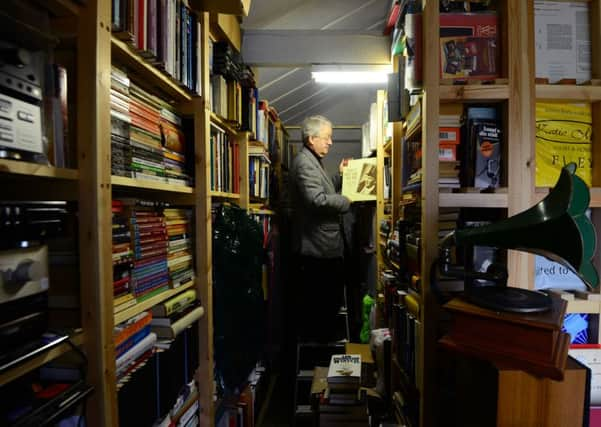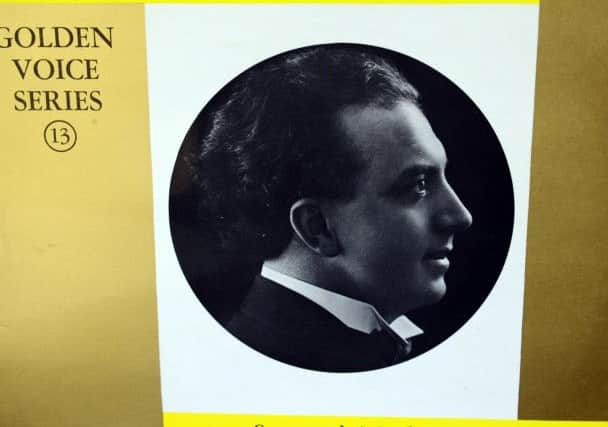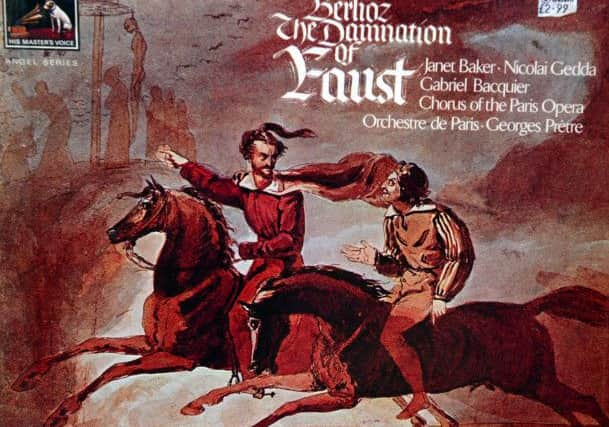Listed (or Liszt-ed): World’s 300 greatest singers


Garages? Yes, two of them, and a sturdy shed, all piled high with records, mainly classical, floor to ceiling, great skyscrapers of them, a Manhattan of music. “It’s an addiction,” he admits, slightly ruefully. “No doubt about it.”
It’s an addiction that has proved useful for his latest book – the A-Z of Singers, which is what it says on the label: a biographical survey of 300 of the greatest opera and concert singers on record. Over 850 pages, it runs from the bass-baritone Theo Adam to the soprano Teresa Zylis-Gara, via many better-known names, including Callas, Caruso, Domingo, Gigli, Pavarotti and two of the best-loved of all female singers, both Northern –Kathleen Ferrier (born near Preston) and Janet Baker (born near Doncaster). It comes packaged with four CDs of recordings by 70 of the singers, giving the book a voice.
Advertisement
Hide AdAdvertisement
Hide AdPublished by Naxos and costing around £20 (less on the internet), it took four years to write and is a follow-up to the A-Z of Conductors compiled in 2007 by Sheffield-based Patmore, a familiar figure in Yorkshire music-making over the past 30 years.


Among other things, he has been music officer for the Yorkshire Arts Association, and Sheffield’s Director of Arts and Museums. More recently, he has been teaching music management at the University of Sheffield and is a leading authority on the recording industry, writing about and reviewing releases for 35 years. And he is in the Premier League of record collectors.
“I’m a treasure-hunter,” he says. “I like to find what I didn’t know I was going to find.” He trails around charity shops all over Britain and used to store the records at home, but his wife Katie had other ideas: “She said the spare room had to be cleared.” So here they all are, together with quantities of CDs and books, stacked around the shed and the garages on sometimes-sagging shelves. Playing all 30,000 end-to-end, I calculate, would take well over three years.
Down here is Melba – The London Recordings; up there is Count John McCormack – The Years of Triumph; on the next shelf unit is The Art of Pablo Casals. But what’s this? The Magical World of James Last. Never accuse Patmore of having narrow musical tastes.
Advertisement
Hide AdAdvertisement
Hide AdSome of the records are still in their original cellophane wrappers. “Yes, there’s the ‘virgin shelf’,” he says. “The unopened ones. I suppose I’m keeping them for a rainy afternoon.”


So does he actually listen to these records? “Yes,” he says, drawing out the word in a way that implies a degree of doubt. “But if I haven’t listened to a particular record, I do intend to. The problem is that I’ve got too much to listen to – and you tend to forget what you’ve got.”
Writing the singers book has added yet more records to the collection.
Researching lesser-known singers – and there are some here who will be familiar to only the most buffish of opera buffs – made him curious to know what they sound like. And, as he says, it’s now all too easy to find the necessary records online: “One click and that’s it.”
Advertisement
Hide AdAdvertisement
Hide AdI test this out for another Yorkshire singer featured in the book: Walter Widdop, born at Norland in Calderdale.
He started work in a woollen mill at 12 years old but went on to become one of the greatest Wagnerian tenors of the 1920s and 1930s, making around three dozen records. I Google “Walter Widdop + records for sale” and more than 30,000 links come up.
So how did Patmore decide who to include and who to omit? “It’s basically a combination of received knowledge and personal opinion,” he says. “But the reference books frequently disagreed about details of singers’ lives. That was a nightmare.”
Relentless checking held him back from achieving his goal of a-singer-a-day, with life, career and recordings encapsulated in 700 to 900 words. He settled for two or three singers a week, punctuated by plenty of listening, some of it to truly connoisseurs’ singers.
Advertisement
Hide AdAdvertisement
Hide Ad“Do you know about Leyla Gencer? The unrecorded Maria Callas,” he enthuses (Patmore is a great enthusiast). This admired Istanbul-born soprano, who died seven years ago, sang at Covent Garden, the Vienna State Opera and La Scala, Milan in the 1950s and 1960s. But she was largely ignored by the major recording companies that gave contracted artists an instant publicity and promotion machine.
“The companies built up Callas to create an image that took her into the stratosphere,” says Patmore. Leyla Gencer didn’t have that advantage. “I met her when I was at Glyndebourne...” he adds.
We talk about his early career in opera stage management. He worked both at Glyndebourne and with Benjamin Britten’s English Opera Group, and spent two years as stage manager at Covent Garden, followed by two more as company manager. “But the stress was destroying my passion for opera,” he says. “It was like a sausage machine, having to get the performance on every night.”
Four years ago, he founded the specialist record label, CRQ Editions, which reissues performances – many of them operatic – that have undeservedly fallen by the wayside.
Advertisement
Hide AdAdvertisement
Hide AdSo who are his favourite singers? He leafs through the A-Z. “Well, Mary Garden made a real impression. Every time I listen to her recording of Depuis le jour (from Charpentier’s opera Louise) I’m reduced to a complete pulp.”
It’s on one of the CDs, unlike another favourite singer included in the book, Tino Pattiera (no, me neither).
“He’s the bee’s knees, so exciting,” says Patmore. “But the singer I’d take to a desert island would be Lisa della Casa; in its prime her voice was incredibly good.”
Choosing the CD tracks was exacting. “It was rather like doing a 3-D crossword. I had to balance a range of voice types – sopranos and tenors and so on – and of repertory – German, Italian, French – and of mood: it couldn’t all be gloomy or jolly. And I wanted to go for some less obvious tracks.”
Advertisement
Hide AdAdvertisement
Hide AdIt’s a fascinating selection, including one of Caruso’s first recordings, made in 1902 in a Milan hotel bedroom with an upright piano for accompaniment.
Before the singer’s death 20 years later, it helped him earn over $2m from his records.
Back in the garage, David Patmore shares his latest collecting passion – videos of opera performances. “Look at this,” he says, picking up one at random. “Maria Chiara, soprano. Almost forgotten now, but absolutely tops 30 years ago.” As I say, a great enthusiast.